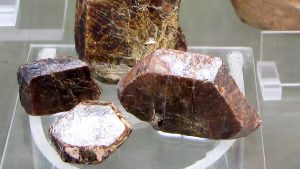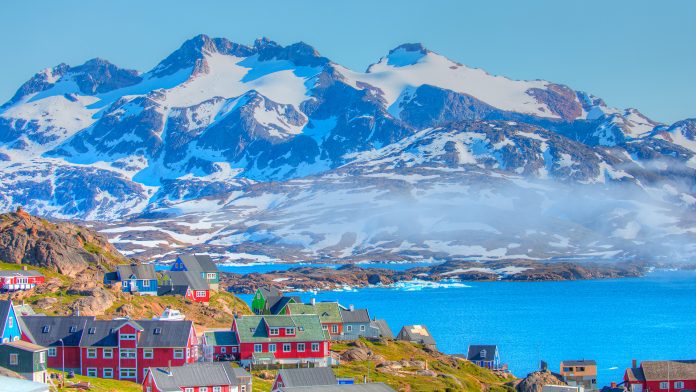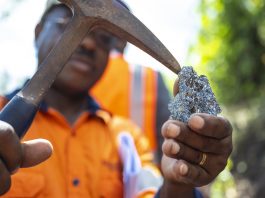As the demand for rare earth metals continues to rise globally, exploration efforts have intensified in Greenland, a country with a vast supply and an ideal climate to mine these commodities.
Greenland has become a focal point for this type of resource extraction. Rare earth metals are essential components of many technological products, including:
- Mobile phones;
- Computers;
- Batteries;
- Electric vehicles; and
- Wind turbines.
Greenland contains some of the largest deposits of rare earth elements (REE) on Earth, such as yttrium, scandium, neodymium and dysprosium.
These REEs have unique properties that make them ideal for several industrial applications due to their ability to withstand extreme temperatures or chemical agents. While most REE mines exist outside of North America, Greenland offers an attractive alternative, given its natural resources and lack of population density.
Recently, foreign companies have begun investing heavily in Greenland’s mining infrastructure by constructing refineries near existing REE sites. The country also recently announced plans to create a ‘green energy corridor’ across its northern regions. This will be powered by renewable energy sources like hydroelectricity, which is generated from glaciers melting into rivers along the coastlines.
The Innovation Platform takes a look at how countries can capitalise on these supplies and create a steady rare earth supply chain while ensuring environmental protection and safeguarding.
The global demand for rare earth metals
The global demand for rare earth metals has increased rapidly, with the estimated global market value exceeding $10bn in 2020. In recent years, the world has sought ways to increase its access to these materials that are essential for modern technology.
In light of this rising demand, there is an opportunity for Greenland’s geographical advantage. Resources located within its borders can be leveraged into a competitive edge when competing on the international stage.
Investing in infrastructure capabilities, such as refining facilities and transportation networks, will enable local producers to access larger markets outside Greenland. Moreover, businesses could capitalise on current trends towards producing goods closer to home or sourcing them locally rather than relying heavily on imports from abroad.

With careful management and strategic planning, Greenland’s natural advantages could meet future demands for REEs both domestically and internationally.
Greenland’s geographical advantage
Greenland has been a source of rare earth metals for centuries, due to its wide range of natural resources and ideal geographical setting. There are several reasons why Greenland is an attractive option for foreign investors, including:
- Geographic location: Greenland lies in close proximity to Europe, making it a viable resource hub for international trade routes. This allows foreign firms to access vital raw materials from Greenland at a relatively low cost compared to other regions located further away;
- Mining activities: Mining activities have increased significantly in recent years as new technologies have allowed deeper exploitation of underground minerals; and
- Resource availability: With vast reserves of oil, gas, coal and iron ore, plus rare earth elements like uranium and thorium, Greenland offers tremendous opportunities for investment in mining exploration and development projects.
The availability of a variety of resources coupled with favourable geographic conditions makes Greenland an appealing prospect for foreign investors interested in tapping into its potential wealth of REEs and other mineral deposits.
What are the benefits of developing Greenland’s resources?
Greenland’s rare earth metals present numerous opportunities for economic growth and environmental sustainability. However, several initiatives should be considered when considering their development, including:
- Economic prospects that are beneficial to both local communities and industry, such as job creation and increased income;
- Resource evaluation that assesses the potential impact on local wildlife, climate change, and mineral extraction;
- Environmental sustainability initiatives that ensure the long-term protection of natural resources in Greenland;
- Social responsibility measures that address issues such as health care, education, housing, and infrastructure; and
- Human capital investments that develop a skilled workforce capable of managing complex projects in the Arctic environment.
By considering all aspects of resource development, governments can ensure that their investment provides tangible value to society while being mindful of its impacts on the environment and local communities.
The aim is to create a sustainable future where economic prosperity is balanced with respect for nature and people alike. This requires careful consideration when evaluating all aspects involved in developing Greenland’s resources, including economic prospects, resource evaluation, environmental sustainability initiatives, social responsibility measures, and human capital investments.
To achieve this balance between protecting nature and fostering socio-economic growth, it is essential to understand how development activities affect local populations and ecosystems.
Impact assessments must be conducted prior to any large-scale project taking place in Greenland to accurately evaluate their effects on local communities before proceeding with construction or mining operations. Such assessment will help inform decision-makers about how best to proceed with Greenland development initiatives while minimising negative consequences for those who depend upon them for livelihoods or sustenance. With adequate planning and foresight, governments can ensure that their decisions concerning rare earth metals extraction are not only economically sound but also environmentally responsible, leading towards a more prosperous future for everyone involved.
How companies are leveraging Greenland’s resources
Greenland’s vast supply of rare earth metals has been the subject of considerable interest among mining companies. The mineral-rich country has seen a rise in foreign investment, with various companies seeking to capitalise on the potential rewards contained within its natural resources.
Companies are making use of advanced processing technology in order to extract and process Greenlandic minerals for commercial purposes. This is being done in an effort to make full use of this valuable resource base.
The technological advancements employed by these firms enable them to access areas that were previously inaccessible due to their remote locations or difficult terrain. They are also able to develop more efficient processes which help improve extraction rates while reducing costs. In addition, some firms are investing in research and development activities in order to further optimise existing methods as well as invent new ones. By doing so, they can maximise the potential benefits of Greenland’s rare earths and other minerals.
Because of this, large-scale investments from international investors have had a positive impact on Greenland’s economy and local communities. With efficient management of these projects, there is significant scope for creating employment opportunities and generating economic growth through increased production capacities.

Therefore, it is clear that leveraging Greenland’s resources provides immense benefits both economically and socially. This sets up a strong foundation for establishing a regulatory framework for mining activities that will ensure sustainability while providing returns over time.
Investment opportunities for foreign investors
Foreign investors have an opportunity to capitalise on Greenland’s rare earth metals. As the world is increasingly turning towards these elements for various applications, investments could be a lucrative venture. However, foreign investors must also consider the country’s highly regulated mining industry before entering into any agreement.
The Government of Greenland has set out clear regulations and guidelines which must be followed in order to ensure compliance with environmental protection laws as well as safety standards during the extraction process.
Additionally, there are strict requirements regarding how much of each mineral can be extracted from each area on a yearly basis. This rule is in place to maintain sustainability within the environment. Any foreign investor wishing to invest in Greenland’s mining industry should familiarise themselves with all relevant policies and procedures prior to investing funds or resources into any rare earth project.
Moreover, potential investors should research local infrastructure and labour force availability since this will impact costs associated with setting up operations or establishing a partnership with existing players in the market.
Furthermore, regional geopolitics may potentially influence the security of investments made by foreign entities. This means that it is essential that due diligence must be taken when exploring opportunities related to Greenland’s rare earth metal deposits.
Given its current state, there is ample room for growth within Greenland’s mining sector and numerous chances for foreign investors interested in seizing investment opportunities involving rare earth metals in the country.
The future of Greenland’s rare earth metal industry
The future of Greenland’s rare earth metals is an uncertain one. For now, it remains to be seen how global demand and pricing trends will affect resource management in the region.
Nevertheless, there are some forecasts that can inform our understanding of the situation. For example, experts expect technological advancements to lead to increased demand for rare earths over time due to their integral role in modern electronics and other high-tech products. This could potentially result in a shortage of resources as extraction becomes more difficult and expensive.
Resource management strategies have been put into place by governments across the globe in order to ensure the sustainable use of these critical materials. However, this has led to regulatory issues which could make it difficult for companies operating within Greenland’s borders to access new sources or exploit existing ones effectively. As such, efforts must be made both locally and internationally to create policies that encourage responsible resource utilisation while allowing businesses to remain competitive on a global scale.
It is clear that the outlook for the future of Greenland’s rare earth metals depends heavily on geopolitical factors, pricing trends, technological progressions, and resource management practices from all stakeholders involved.
While there may still be much uncertainty surrounding this issue, with careful planning and consideration, we can ensure its long-term sustainability for generations to come.
Please note, this article will also appear in the fourteenth edition of our quarterly publication.








